How do you use coffee grind types?
How ever the hell you want!
I know that isn’t a helpful answer but honestly, it’s the truth.
You’ll see all over the internet(including in this post) that you should use a coarse grind for a french press.
But then James Hoffman, A world barista champion says that he uses a medium grind for a french press.
Honestly, it’s an open book.
There is nothing set in stone.
Things change from bean to bean and person to person.
But for those wanting structure, I will lay out some guidelines.
But remember that that’s all these are.
Guidelines.
Use them as starting points and tweak from there.
These are by no means set in stone rules.
KNowing the difference
The most important thing to gain from this post is knowing the difference between coffee grind types.
Grind size plays a huge role in the flavor of your cup.
Grind types might even be the most important variable that you have control over.
Getting the grind type right for your brewing method is important for proper extraction of coffee, which means maximizing flavor.
Over extracted coffee will taste bitter.
Under Extracted coffee will taste sour.
The grind you choose will change depending on which brewing method you choose. For instance, A french press will need a different grind size than an espresso will.
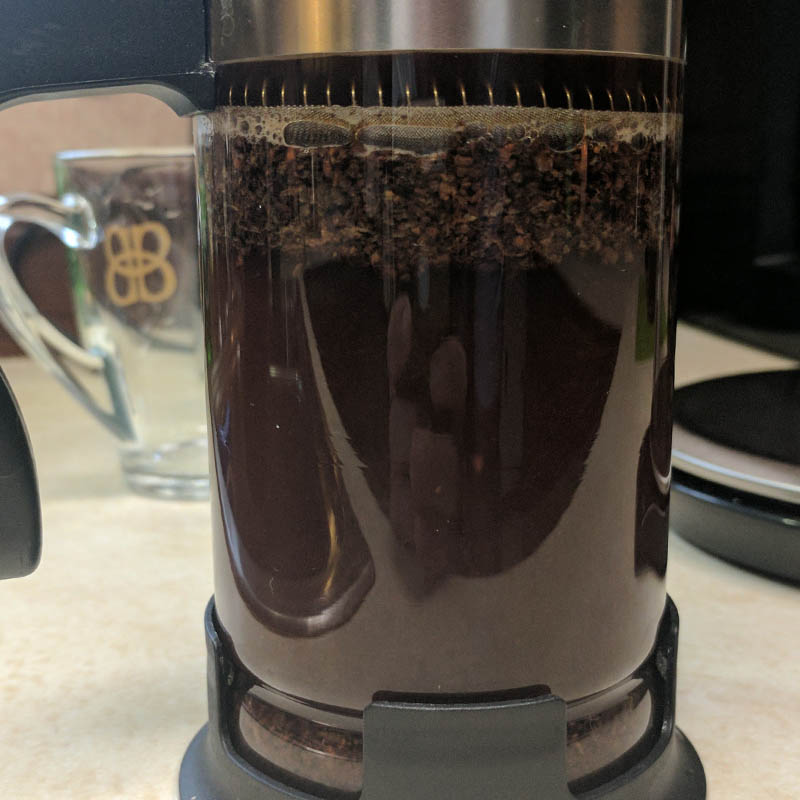
This is because each brew method uses water differently.
An espresso grind is very fine and when making an espresso you force water through the grounds quickly.
The water is not in contact with the coffee for very long.
Compared to a french press, which needs a grind that is more coarse.
This is because the coffee steeps in hot water.
There is no turbulence and brew times are longer(4-8 minute).
Because of the longer brew time, you don’t need as much surface area exposed to the water.
It’s important to know that the size of each particle of coffee together with the length of time they are in contact with the water is what determines the flavor of your coffee.
Basically, a more finely ground coffee has more surface area than a more coarsely ground coffee. This gives more area for water to grab a hold of and pull out all those things we love, resulting in a more satisfying coffee flavor.
Filters effect Grind size
Another thing to make note of is the filter you are using. You should adjust your grind to the filter you are using.
According to Karen, At huladaddy.com It’s not just the brew method that determines the size of your grounds but also the filter.
Generally speaking, metal and plastic filters have larger holes in them compared to paper filters. Therefore, if you are using metal or plastic filters your grind will need to be a bit more coarse than if you are using a paper filter.
If you use a grind that is too small for your filter you can either 1.) Clog the filter or 2.) get lots of grounds in your cup of coffee.
1.) Clog the filter or 2.) get lots of grounds in your cup of coffee.
2.) get lots of grounds in your cup of coffee.
Either way, you are diminishing your coffee experience if you are not using the proper grind type!
We are not here to drink terrible coffee, we are here to enjoy amazing coffee!
Coffee Grind Types
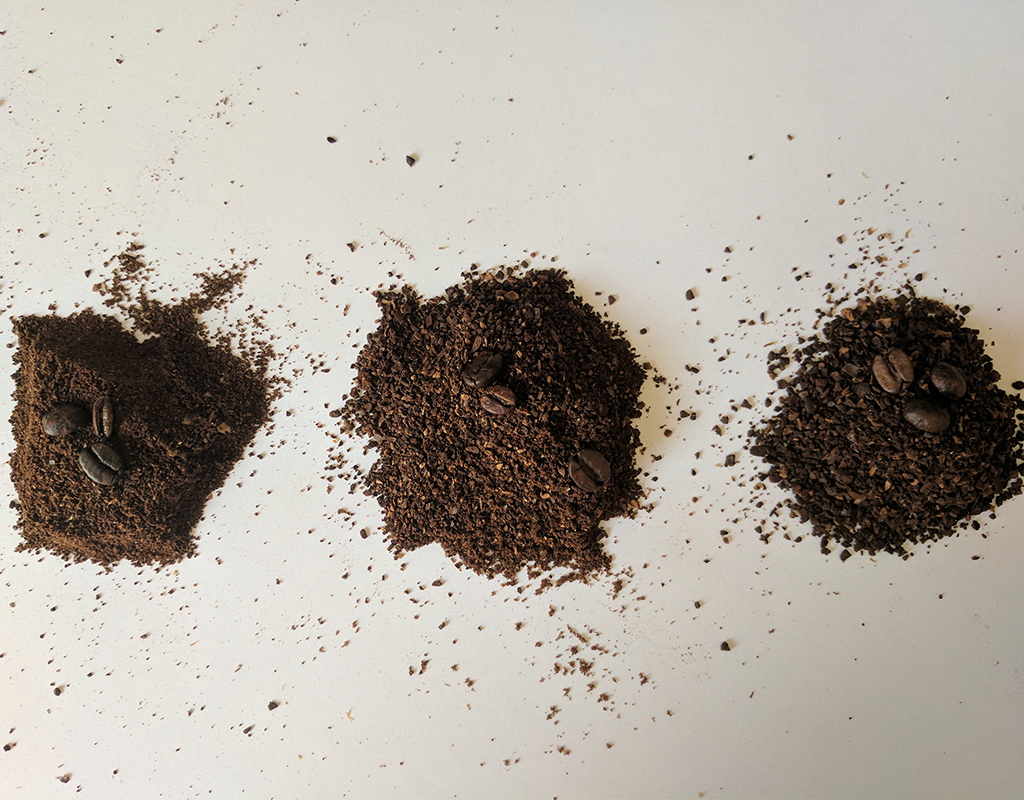
So if you want to get super technical with it, coffee grind types are broken down based on the particle size measured in microns.
According to Kevin Sinot, The author of The art and craft of coffee, Particles can range from 100 microns all the way up to 1,00 microns.
To give you an idea of scale, an espresso grind is 200 microns and an auto drip machine’s average particle size should be 800 microns.
This is going a little too in depth for me. I don’t have the tools to measure my particle size. This is where experience comes in.
After you get to know your grinder and more importantly your taste you can tinker with the size of your grind and make it your own.
Generally speaking, there are a few basic grinds that most of the popular brewing methods use, they are:
Fine, Medium-fine, Medium and Coarse
Depending on your grinder you may see settings for fine, medium and coarse.
There are grinders out there with up to 40 different grind settings, you can do a lot of tinkering with these guys.
Coffee is personal and you will have to modify each grind slightly until you find your taste. Just because you are using an auto drip machine and the normal grind for that is medium, does not mean that you’re going to love it.
You will have to experiment to find what you like.
This is part of the fun I think, mistakes can sometimes be pleasant surprises.
Note: A Cuisinart burr grinder and a Javapresse hand grinder were used to grind the coffee pictured below, for a detailed review check out my experiences with them.
Fine Grind
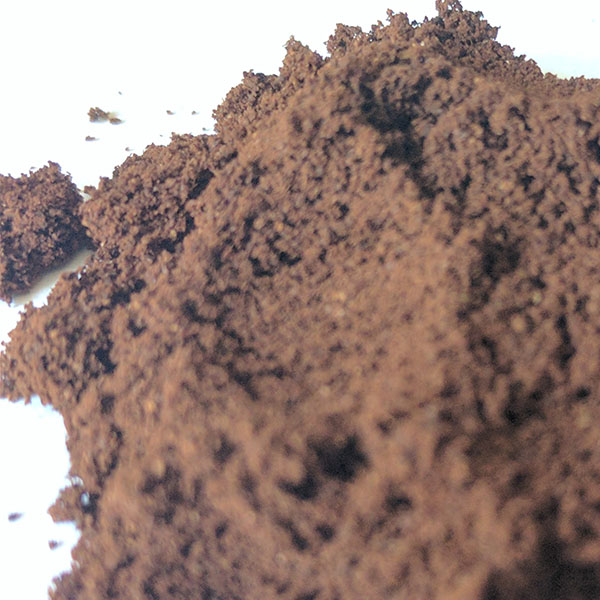
This is a fine grind. You would use this type of grind mostly for making espresso or using an aeropress. I’ve brewed a pretty mean cup with an aeropress and a fine grind. Check out the recipe I used here.[link]
Grinds of this size generally make the best tasting coffee when you have brew times of 2-3 minutes max, Espresso brews only take 20-30 seconds.
If contact time is longer than that you will really start to get a lot of the bitter notes from the coffee.
Medium-Fine

This is my preferred grind for brewing a pour over.
Brewing times for this grind should not exceed 6 minutes, After that, you start pulling out the bitterness.
Medium Grind
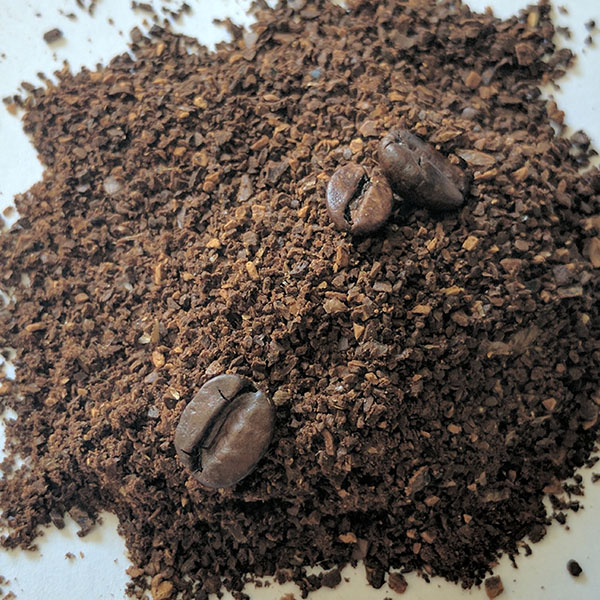
This is a medium grind. It’s perfect for most auto drip brewers.
With this grind type, your brew time should be anywhere from 4 – 8 minutes.
Coarse Grind
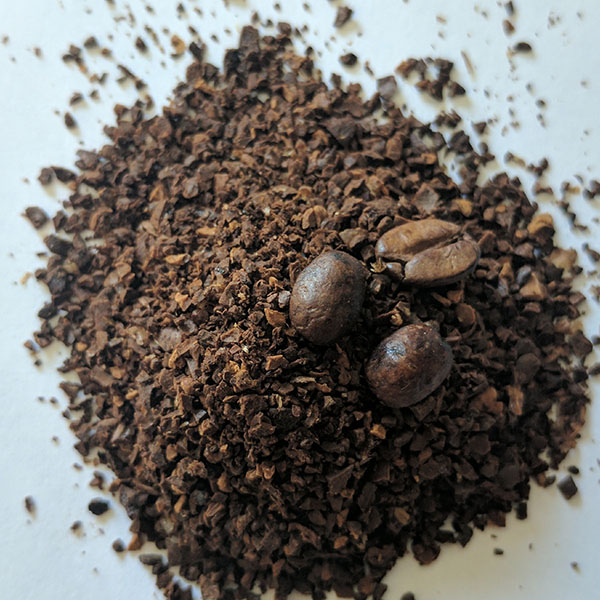
This is a Coarse grind. The bigger the grind the longer the contact time needs to be.This is what most would recommend for a French press or the increasingly popular method of cold brewing.
Other Grind Types
There are other classifications of grind types such as medium-coarse, extra-coarse, and extra fine. REally the list goes on, mentioned earlier you can get grinders that makeup to 40 micro adjustments in your coffee grind but if you’re new to homebrewing you might not benefit from these grind differences and feel a bit overwhelmed.
That is why I have only covered the most popular coffee grind types.
I want to give you a good base.
After you know these and begin to know your grinder you can start to make micro adjustments to these basics and really find what suits you best.
The most important tool
“The coffee grinder is the most overlooked piece of the puzzle when it comes to brewing great coffee.” –Home Grounds
I couldn’t agree more with the guys at home grounds.
I also think you should know how to use that coffee grinder properly as well.
Most people don’t think much of coffee grind types affecting the taste of their cup. In actuality, grind type has a HUGE impact on taste.
It may be the most important variable that you have control over.
Another thing that I haven’t mentioned yet that is absolutely crucial is grind consistency. No matter the grind type used the most important thing is that each ground is relatively close to the same size.
This comes down to the grinders job. Investing in a decent grinder is a good thing to do.
If you want to know more about grinders check out my next article. I break down three popular grinders that I have personal experience with. None of these grinders will break the bank, all of them are under $50.
Do you want to know what to look for in a good coffee grinder?





